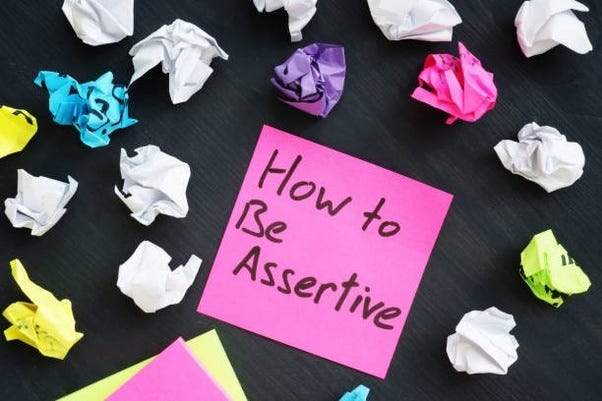Book Appointment Now
Boundaries 101: Practicing Assertive Communication for Setting and Communicating Boundaries

We continue our journey of setting and upholding healthy boundaries in your relationship, and today we’ll be discussing the significance of assertive communication in effectively communicating your boundaries. Assertive communication is a crucial skill that allows you to express your needs, set boundaries, and cultivate healthy relationships. It means effectively articulating your thoughts, feelings, and opinions while honoring the rights of others. When you practice assertiveness in your communication, you can create clear boundaries and fulfill your needs without compromising your self-respect or infringing upon the rights of others.
Guidelines for Practicing Assertive Communication
- Use “I” statements
When expressing your boundaries or concerns, use “I” statements to take ownership of your feelings and experiences. For example, instead of saying, “You always interrupt me,” say, “I feel frustrated when I’m interrupted.”
2. Clearly Express feelings and needs
Clearly articulate how a situation makes you feel and what you need to address it. This helps others understand the impact of their actions on you. For instance, saying, “I feel overwhelmed when I have too many tasks assigned without proper prioritization. I need clearer guidance to manage my workload effectively.”
3. Maintain appropriate body language and tone of voice
Non-verbal cues significantly impact assertive communication. Maintain eye contact, stand or sit upright with an open posture, and use a calm tone of voice to convey confidence and respect. For example, while communicating your boundary, maintain an upright posture, make eye contact with the person you’re speaking to, and speak in a firm but respectful tone.
4. Avoid Blame and Criticism
Instead of blaming or criticizing others, focus on sharing your perspective and needs. Use non-confrontational language and refrain from attacking or accusing the other person. For example:
Instead of saying, “You always make mistakes and never listen to me!”
You can say, “I feel frustrated when I notice errors in our work, and I would appreciate it if we could take more time to review and address them together.” This approach promotes constructive communication and problem-solving.
Conclusion
Practicing assertive communication empowers you to establish clear boundaries while maintaining respectful relationships in both personal and professional contexts, allowing you to effectively convey your boundaries without resorting to aggression or passivity.
It’s important to remember that while knowing how to communicate your boundaries assertively is valuable, your main goal should be to have and understand these boundaries. They may not always be expressed perfectly, and there might be times when they come across as rude. Learning and unlearning in this process is part of the journey, and it’s important to recognize that, even when you communicate assertively, some people may react negatively. So, give your best effort, focus on improving or refining your porous or rigid boundaries, and work towards a life with healthier boundaries.
For those of you eager to explore the intricate world of boundaries, I have an exciting announcement: our Boundaries course has officially launched! In this course, we will dive deeper into the art of setting and maintaining healthy boundaries in real time. You can expect in-depth insights, practical strategies, and a comprehensive understanding of how to navigate the intricacies of boundaries. Click on the link, and let’s embark on this journey to empower you with the tools to foster healthier, more fulfilling relationships and a better quality of life.
Note from the Author
If you’re ready and you’d like my help with healing, finding peace in life and breaking free from these toxic patterns, then you can book a FREE BREAKTHROUGH CALL with me HERE. Happy healing 💙💙. Feel free to share and comment! Use this information with caution, it comes from my own thoughts & bias, experiences and research😊.





